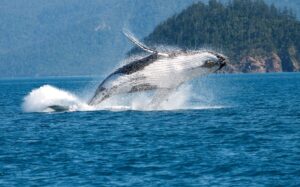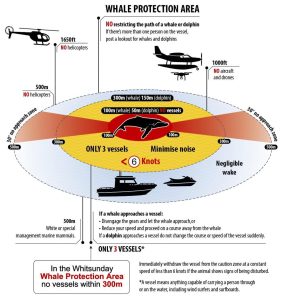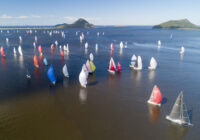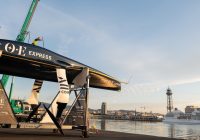Natures spectacle is in full swing in the Great Barrier Reef Marine Park, as thousands of majestic giants hit the ‘humpback highway’ for their annual journey along Australia’s East coast.

After feeding in the icy Antarctic waters during the summer months, the first of over 30,000 humpback whales have started to make their way to the warmer waters of the Great Barrier Reef to mate, calve and socialise.
Director of Field Management Strategy at the Great Barrier Reef Marine Park Authority (Reef Authority), Dr Mark Read, emphasises the significance of this annual migration and the global effort in safeguarding these gentle giants.
“It’s not a coincidence that these whales migrate to the Great Barrier Reef: it’s thanks to a global management effort in protecting these incredible gentle giants,” Dr Read said.
“We recognise that the Great Barrier Reef is an important part of the migration path for our southern visitors (humpback whales), and the Reef Authority is dedicated to doing everything we can to put protection measures around these animals.
“As soon as these whales reach our waters, they are protected by a series of rules that ensures both their safety and those viewing them during any interactions.”
The Reef Authority is urging whale-watching enthusiasts and visitors to the Marine Park to keep a safe distance for both the whales and the whale-watchers.
“These giants of the deep never cease to amaze, even for whale researchers or tourism operators who are lucky enough to interact with them each year,” Dr Read said.
“But given the popularity of the Great Barrier Reef to a huge range of users, and the number of whales making the annual migration to the Great Barrier Reef, it will become a bustling humpback highway over the coming months, and important for everyone to adhere to approach distances.
“If you run into a 14 or 15-metre, 40 tonne whale, it’s likely your boat will come off second-best, and the whale could also be injured.
“The message is simple, be alert, watch out for whales, and know the rules to keep a safe distance. It’s a simple message to ensure the safety of these magnificent creatures and those who admire them.”
Whale and dolphin watching regulations
The Great Barrier Reef is a vitally important breeding ground for about 30 species of whales and dolphins (cetaceans).
The most commonly sighted whales are humpbacks, which migrate from Antarctica to the warmer waters of the Great Barrier Reef Marine Park each year from May to September – to court, mate, give birth or rear their calves.
We all have a responsibility to help protect whales and dolphins and to keep safe distances from them.
Operating a vessel
- Boats must stay at least 100 metres from whales in the Great Barrier Reef Marine Park.
- Boats must always stay 300 metres from a whale calf.
- Jet skis must stay 300 metres away from whales.
- Approach the whale or dolphin only from the rear or by positioning the vessel ahead of the whale or dolphin, and always in a position that is more than 30 degrees to its observed direction of travel
- If the whale or dolphin is a calf, a vessel must not enter within a radius of 300 metres of the whale and 150 metres of the dolphin (i.e. the caution zone)
- If a calf appears, causing your vessel to be within the caution zone, you must stop the vessel and turn off the engines or disengage the gears or withdraw your vessel at a constant slow speed
- If your vessel is closer than 300 metres to a whale or 150 metres to a dolphin, it must be operated at a constant slow speed; if closer than 50 metres to a dolphin, the vessel must not change course or speed suddenly
- If there are three vessels within 300 metres of a whale or dolphin, all additional vessels must remain outside a 300 metres radius of the whale or dolphin
- If a whale approaches close to your vessel, take all precautions to avoid a collision; either slow down and steer away from the animal or place the engines in neutral and let the animal pass
- If you accidentally strike a whale or dolphin you must report it
Are you in the Whitsundays? Additional rules apply
- Boats must stay at least 300 metres from whales within the Whitsundays Whale Protection Area.

Legal Requirements
- When you encounter whales or dolphins, either from a vessel, aircraft or in the water:
- You must not kill, take, injure and/or interfere with whales and dolphins – interference includes harassing, chasing and herding
- You must not restrict the path of whales or dolphins
- You must not touch or feed, or attempt to touch or feed, a whale or dolphin
- You must not enter the water within 100 metres of a whale or within 50 metres of a dolphin
- You must not approach closer than 30 metres to a whale or dolphin if you are in the water. If a whale or dolphin approaches you while you are in the water, move slowly, do not touch or swim towards it
- You must minimise noise when closer than 300 metres from a whale or dolphin.
- The following legal requirements are set out in the Great Barrier Reef Marine Park Regulations 2019 and are complemented under the Environment Protection and Biodiversity Conservation Act 1999.







